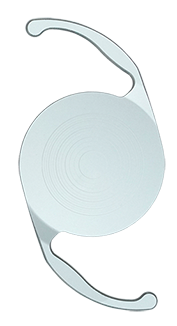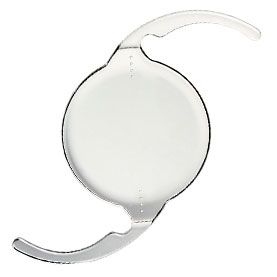In preparation for cataract surgery, certain measurements are taken of your eye to determine the correct power of the IOL to be placed in your eye at the time of cataract surgery. Based on the measurements, various lens implant options will be presented to you. There are generally three categories of lens options:
Monofocal (single-focus) IOL
This technology has been available for many years and is still the most commonly implanted IOL. Generally patients are corrected for distance vision so reading glasses will likely be required following your surgery. These lens implants are covered by most medical insurance plans. Examples: Alcon Clareon Monofocal and J&J Tecnis Monofocal.

Advanced Technology IOL
These newer options include both multifocal and extended depth of focus lenses. The implants offer the ability to correct for BOTH distance and near vision. This reduces or potentially eliminates the need for any glasses following surgery. These options also include astigmatism correction options for those with significant corneal astigmatism. Examples: Alcon Clareon Panoptix Trifocal, J&J Tecnis Multifocal, Alcon Vivity, and J&J Tecnis Symfony.
Toric IOL
These lens implant options can correct corneal astigmatism, eliminating or reducing the need for glasses, which can also correct astigmatism. This will be measured prior to cataract surgery. These IOLs are available in monofocal, multifocal, and extended depth of focus options as listed above. The above monofocal and advanced technology lenses all provide toric lens options.


